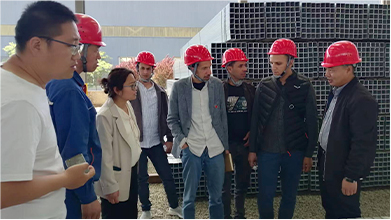butterfly valve cpvc
The Benefits of CPVC Butterfly Valves in Modern Applications
Butterfly valves are widely recognized for their efficiency and versatility in various applications due to their simple design and reliability. When paired with CPVC (Chlorinated Polyvinyl Chloride), these valves present a combination of benefits that make them an ideal choice for many industries. This article explores the advantages of CPVC butterfly valves, their applications, and why they are becoming increasingly popular in fluid control systems.
Understanding CPVC and Butterfly Valves
CPVC, a thermoplastic material, is known for its excellent resistance to heat, corrosion, and chemical exposure. This makes it an ideal material for manufacturing valves that are required to withstand harsh conditions. Butterfly valves, on the other hand, feature a disc that rotates on a shaft to regulate flow. This design allows for swift opening and closing, making them suitable for on/off service as well as flow modulation.
Advantages of CPVC Butterfly Valves
1. Corrosion Resistance One of the standout features of CPVC butterfly valves is their superior resistance to corrosion. Unlike metal valves, which can rust and degrade over time, CPVC does not corrode, ensuring that the valve maintains its integrity and functionality even in aggressive environments. This characteristic makes CPVC butterfly valves particularly suitable for chemical processing applications.
2. Temperature Tolerance CPVC can withstand a higher temperature range compared to standard PVC, making CPVC butterfly valves suitable for hot water applications and various industrial processes. They can typically handle temperatures up to 200°F (93°C), thereby offering flexibility across a wide range of operations.
3. Lightweight and Easy to Install CPVC is significantly lighter than metal alternatives, which simplifies the handling and installation process. The lightweight nature of these valves reduces installation labor costs and time, making them a favorite in both new constructions and retrofitting projects.
4. Cost-Effectiveness While the initial investment for CPVC butterfly valves may be comparable to that of metal valves, their long-term cost-effectiveness can be considerable. The durability and resistance to corrosion minimize maintenance needs and replacement frequency, contributing to overall savings in operational costs.
butterfly valve cpvc

5. Leak-Free Operation CPVC butterfly valves are designed to provide leak-free operation, which is crucial in applications where fluid leakage can lead to environmental or safety hazards. The effective sealing capabilities ensure a reliable barrier against leaks, thereby maintaining system integrity.
Applications of CPVC Butterfly Valves
Due to their unique properties, CPVC butterfly valves find uses across various sectors
- Chemical Processing The ability to resist corrosive substances makes CPVC butterfly valves ideal for handling aggressive chemicals in industries such as wastewater treatment, pharmaceuticals, and painting.
- Water Treatment In water treatment facilities, these valves are used to control flow and manage water distribution systems. Their longevity and reliability are key to maintaining water quality.
- HVAC Systems In heating, ventilation, and air conditioning systems, CPVC butterfly valves help regulate the flow of hot water and steam efficiently.
- Food and Beverage Due to their non-toxic properties and resistance to corrosion, CPVC butterfly valves are often implemented in food and beverage processes, ensuring safe and effective fluid control.
Conclusion
In summary, CPVC butterfly valves represent a forward-thinking solution in fluid control technologies. Their corrosion resistance, temperature tolerance, lightweight construction, and cost-effectiveness make them an advantageous choice for numerous industries. As the demand for reliable and efficient valve systems continues to grow, CPVC butterfly valves stand out as a practical and sustainable option to meet the needs of modern applications. Whether in chemical processing, water treatment, or HVAC systems, these valves contribute significantly to operational efficiency and safety.
-
The Smarter Choice for Pedestrian AreasNewsJun.30,2025
-
The Gold Standard in Round Drain CoversNewsJun.30,2025
-
The Gold Standard in Manhole Cover SystemsNewsJun.30,2025
-
Superior Drainage Solutions with Premium Gully GratesNewsJun.30,2025
-
Superior Drainage Solutions for Global InfrastructureNewsJun.30,2025
-
Square Manhole Solutions for Modern InfrastructureNewsJun.30,2025
-
Premium Manhole Covers for Modern InfrastructureNewsJun.30,2025
